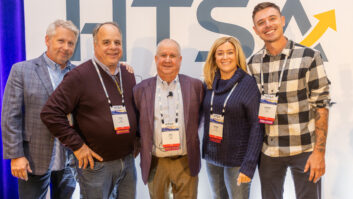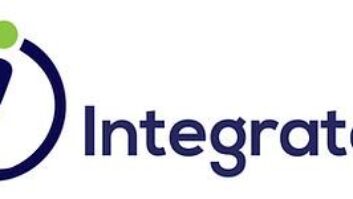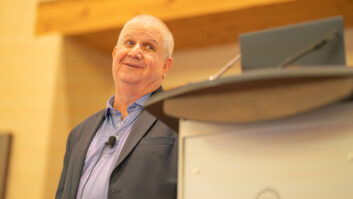The era of buying groups as “line collectors” is over. The leaders for the three main organizations within the custom integration channel have become training and education partners for their dealer and vendor partners, cheerleaders for new business development, and thought leaders at the level of mini trade associations.
HTSA, the smallest of the big three, has only around 80 dealer members to serve, but its agenda could be considered the most progressive and forward-thinking. Its executive director Jon Robbins is not focused on adding new member companies, per se (although a couple will soon will be announced) or fixating on “buying power” and vendor discounts, but instead on educating his membership with in-field and back-office best practices, emerging technology thought leadership, and business growth opportunities.
The agenda of the group has changed so much since Robbins took the helm two and half years ago that he believes it should no longer should be called a buying group anymore. Robbins announced during his state of the business keynote at the HTSA Spring Conference at The Ritz-Carlton in Orlando this week that HTSA is now a “trade consortium.”

“Rebates and vendors, we love them,” Robbins said. “We still feel that as a member-owned organization we put more money in our vendors’ pockets than anybody else does. But we have so much more to offer with our education and all of these intangibles and training endeavors, new technology endeavors, the information sharing that we do, and the communication we do.
But why “trade consortium?”
If you look up the word “consortium” and how it’s defined, Robbins explained, “you’re going to see that it falls exactly in line with everything that we’re doing. We just don’t want it to be just about dollars and cents. And it can’t just be on the backs of our vendors. We have a responsibility to grow our businesses and our offerings and what we do well, with organic growth.”
Robbins likes to draw on the quote by hockey great Wayne Gretzy that HTSA needs to go “where the puck will be, not where it has been.” As part of its thought leadership, last fall the group hired industry veteran Tom Doherty to lead its emerging technologies initiatives. His first effort was to connect the group to lighting fixture companies that previously only worked directly with professional lighting designers, architects, and interior designers. At the spring meeting this week, the group was introduced to Paul Sciallo, the CEO of an innovative company called Delos, which, for the past seven years, has been studying the effects of indoor living on human circadian rhythms and how to improve to health through the use of light, air filtration, water filtration, and acoustics.
Mark Hoffenberg, president of AudioVisions, a relatively new addition to HTSA and its newest board of directors member, has been actively involved in three test projects for Delos to provide results back to the group. He’s making no money on the projects, but wants the spec homes to serve as a proof of concept for his own company and his colleagues at HTSA. It’s the ability to connect with progressive opportunities like this one that Hoffenberg says convinced him to join his first buying group, after 26 years in business.
“We joined essentially because of the best practices initiatives and the ability to spend time with the other larger, well established, forward-thinking, like-minded integration firms,” he said. “We didn’t join because it’s a buying group. The way HTSA is set up, you aren’t going to be in peer group conversations with your direct competitors, so you’re more willing to share intimate knowledge.”
With his Delos projects, Hoffenberg is working directing with architect partners to integrate the company’s Darwin software platform and recommended technology partners into the construction of the homes. Architects are an easier sell for this type of initiative, he said, because they already understand the goals behind LEED certification.
“LEED certification is all about having a healthy planet. It’s focused on being green through construction techniques or energy savings,” he said.
Similarly, Delos focuses on what the company calls the “well-building” standard, which is about having healthy inhabitants of those building. “It’s the intersection of architecture and design and health and wellness,” Hoffenberg explained. “For most of man’s existence, 90 percent of our time was spent outdoors with pristine air, pristine water, and circadian rhythms. Today, we spend 90 percent of our time indoors, and that really screws up our body.”
Delos wants to bring the good elements from outside into the home. The company doesn’t sell filtration systems or any of the other supporting systems for its Darwin technology, but works with vendors in these various categories and recommends best of breed solutions.
Robbins says that based on what the group learns from pilot projects from Hoffenberg and others, it will roll out the technology gradually to qualified dealer members. Eventually, it will provide integrators with a foot in the door with more architects and builders. “We can explain that we’re an authority on this wellness technology, then we’ll have the opportunity to tell about the other things that we do.
As for the lighting fixture initiatives also being led by Doherty, Robbins pointed out that the group has trained 80 people, both technical and sales, in lighting fixtures, since its October Fall Conference. HTSA also has formed an affiliation with the American Lighting Association (ALA) and is helping HTSA members underwrite the cost of joining that trade group. And, once an HTSA member company has its employees trained, and they’ve passed appropriate tests, they will be certified as lighting designers, according to Robbins.
For both the ALA and Delos partnerships, Robbins is quick to point out that the group must take the process slowly, pushing it into a new area only after its members are properly trained and supported.
“We can’t say, ‘Hey, we’re in the lighting business! Go out and sell fixtures.’ That’s very dangerous. Success is great, but failure can be very expensive. We have a huge responsibility to our members to know who may be ready and who is not.”
That being said, the group has done “well into seven figures” in lighting fixture purchases since the Fall Conference. “The business is there,” Robbins said. “We just want to put our people in a position for success.”

Since its Fall Conference, HTSA also has led three of its technical Master Classes through Maverick Technical Institute in Nashua, NH, training around 60 installers in that school’s week-long courses. As well, HTSA held a Standardization Master Class at Maverick, where the group invited in operations people and taught them repeatable processes. “We’re getting to the point where these guys from different companies are using the same color codes because they’re learning about standardization in the same way,” Robbins said.
The group also attended several Master Classes at vendor partner headquarters, including Sonance’s brand-new facility in California.
To help HTSA members in the sales process, the group is also providing its members with the new version of its Home Technology & Lifestyle Guide, a glossy, 44-page leave-behind brochure that is brand agnostic but syndicated for members to put their name on the front and the back of, as if they produced it themselves. If they did, it would cost about $20 a book, Robbins said. Instead, it’s a member benefit for communicating with builders, architects, and designers.
All of these efforts, Robbins said, helped lead to 36.7 percent more sales (at cost) through its vendor partners in 2017 over 2016.
For Frank Sterns, who leads Sony’s initiatives in the custom integration channel, HTSA’s success is notable but he was hesitant to play favorites among the big three groups. He does believe, however, that this is the best it has ever been working with the groups.
“In my whole career, I’ve never seen buying groups execute as well as all three are right now, making commitments and delivering on those commitments,” he said. “They’ve gone, in my opinion, from line collectors, to very strong, cohesive bodies of having strategies and working as a group to achieve them. I can remember being quite frustrated early in my career because dealers would do what they wanted to do and just kind of take a manufacturer’s money, but now they work much more cohesively, moving in the direction espoused by the group. I don’t know if that’s because the leadership is better or the groups are more focused or if things have changed, but all of the groups are better now.”
Crestron is HTSA’s most notable new vendor partner, having eschewed buying groups for many years. The company’s Phil Thompson and John Clancy were looking for what Thompson calls a “similar mechanism” to how their company goes to market, creating a value channel in the CI market. They felt that they found the best partner in HTSA.
“One of the things that we have been heavily focused on is lighting and shades and our new DM NVX over IP,” Thompson said. “We’ve been looking for who can be an accelerator or catalyst for that business, and although HTSA already had a number of our dealers, they don’t have all of them.”
Crestron saw that there was an opening to be the lighting and shade manufacturer of choice for HTSA, in a productive two-way partnership. “That, along with heavy hitters like Tom Doherty, was a really compelling reason to join,” Thompson explained. “We need to have HTSA behind us to give us the credibility to be in this residential space,” he said. “Having HTSA just turn around and say, ‘We’re a back-and-forth partner with Crestron,’ is just fantastic for us.”
For Rosewater Energy Group’s Joe Piccirrilli, joining HTSA allowed his relatively new company to brand build and reach critical mass for its niche power management product. “What HTSA does for us, is provide the ability to influence 80 of the most influential dealers in the country, in a very intimate setting twice a year,” he said. “That allows us to get our brand some form of critical mass that makes advertising worth it. It is that step that so many companies ignore, because it is so difficult to find that vehicle. From a purely economical standpoint, this in invaluable. It’s very important for us to be represented here and for us to do everything that we can to make the HTSA members successful because, for the long term, that’s what will make us successful.”
Thirty-eight-year-old Audioquest has been an HTSA vendor partner for a very long time, but for Shaun Scheutz the group’s twice-a-year meetings offer a lot of beneficial two-way dialogue. “Not only are we able to meet with some of our most important dealers one on one, but we’re also really able to pull from them. I think in all of our businesses, there’s always eight million things going on. There are a lot of distractions. Here, we can be a little more focused. And there’s the discussion of what we can do as a vendor to help the group grow, not just an individual dealer. A lot of similar feedback from dealers helps us figure out how to better serve the entire group. It’s all about being able to ask questions and learn.”







